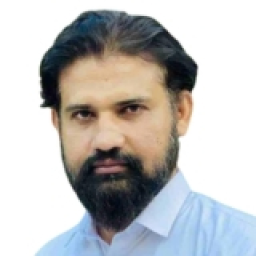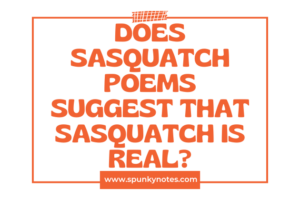

Estimated Reading Time: 6 min
Q. How did Renaissance thinkers and artists revive and reinterpret classical Greek and Roman ideas?
During the Renaissance, which began in the 14th century and extended through the 17th century, thinkers and artists looked back to the classical civilizations of Greece and Rome. They admired the achievements of these ancient cultures. They sought to bring their ideas into their own time.
Renaissance scholars and artists created a movement that profoundly changed Europe by studying ancient texts, reviving classical art forms, and applying classical principles to new contexts.
Their revival of classical ideas marked a shift from the Middle Ages. This shift led to new philosophy, science, art, and literature developments.
Rediscovery of Ancient Texts
One of the key ways in which Renaissance thinkers revived classical ideas was by rediscovering and studying ancient Greek and Roman texts. Many classical works were lost or forgotten in Western Europe during the Middle Ages.
However, by the 14th century, scholars began to recover these texts. They often found them in monasteries or through contact with the Islamic world, where many classical works had been preserved and translated.
Greek scholars fleeing the fall of Constantinople in 1453 also brought important manuscripts to Western Europe.
Renaissance scholars translated works by philosophers like Plato and Aristotle. They also translated historians such as Herodotus and Livy and poets like Homer and Virgil. These texts became the foundation for humanism, a central intellectual movement of the Renaissance.
Humanists believed in studying classical literature to understand human nature and society. Thinkers like Petrarch and Erasmus promoted the study of these ancient texts. They argued that these texts provided wisdom for the modern world.
Focus on Human Potential
Humanism, influenced by the study of classical texts, emphasized the potential of individuals and the value of human achievements. The human-centered focus of classical Greek and Roman culture deeply inspired Renaissance thinkers.
Ancient Greek philosophy, particularly Socratic and Platonic thought, encouraged inquiry into the human condition and the importance of reason. Roman ideals of civic duty, citizenship, and leadership were also revived.
Renaissance humanists, such as Erasmus and Sir Thomas More, wrote about the potential for humans to achieve greatness in both moral and intellectual fields.
They believed that humans could shape their destinies. They also believed that education could lead to personal and societal improvement, particularly through studying classical texts.
Renaissance Art
Renaissance artists also revived and reinterpreted classical Greek and Roman art forms. They studied the sculptures, architecture, and paintings of the ancient world.
Artists sought to replicate and improve upon the classical ideals of beauty, proportion, and harmony. Artists like Michelangelo, Leonardo da Vinci, and Raphael looked to the ancient world for inspiration.
One key aspect of classical influence in Renaissance art was the focus on realism and the human form. Greek and Roman artists had mastered the representation of the human body.
They emphasized ideal proportions and lifelike details. Renaissance artists adopted these techniques, producing works that portrayed the human figure with detail and accuracy not seen since antiquity.
For example, Michelangelo’s sculpture of David reflects the classical ideal of the human body, combining physical perfection with a sense of inner strength.
In painting, artists applied classical principles of perspective, symmetry, and balance. The use of linear perspective, which creates the illusion of depth on a flat surface, was perfected during the Renaissance.
This technique was inspired by the geometric principles used in classical architecture and art. Artists like Leonardo da Vinci used perspective to make their paintings more realistic, as seen in his famous work The Last Supper.
Renaissance architecture also drew heavily from classical Roman designs. Architects like Filippo Brunelleschi and Andrea Palladio studied ancient Roman buildings like the Pantheon. They applied classical principles of symmetry, proportion, and column use in their designs. Palladio’s Villa Rotonda, for instance, was directly influenced by Roman temple architecture.
Revival of Classical Philosophy
In addition to art, Renaissance thinkers revived and reinterpreted classical philosophy, particularly the works of Plato and Aristotle. They studied classical ideas about ethics, politics, and the natural world.
They applied these ideas to the issues of their own time. Plato’s philosophy, which emphasized the existence of ideal forms and the importance of rational thought, became influential among Renaissance thinkers. These thinkers sought to understand the world through reason and observation.
Aristotle’s works on logic, ethics, and natural philosophy were also widely studied. His emphasis on empirical observation and logical reasoning influenced Renaissance scientists and philosophers.
These included figures like Galileo Galilei and Francis Bacon, who helped lay the groundwork for the Scientific Revolution. The classical focus on logic and empirical evidence encouraged Renaissance scholars to question traditional beliefs. They sought new knowledge about the natural world.
Classical Ideas in Literature
Classical themes deeply influenced Renaissance literature. These themes focused on human nature, morality, and the virtues of leadership and heroism. Writers such as Dante, Petrarch, and Machiavelli studied classical texts and incorporated their themes and styles into their works.
For example, Dante’s Divine Comedy was heavily influenced by Roman poets such as Virgil, whom Dante even includes as a guide in the story.
Machiavelli’s The Prince drew on examples from Roman history and classical political thought. His pragmatic approach to politics emphasized the importance of power and practicality over morality.
This reflected the influence of classical ideas about leadership and statecraft. Renaissance writers were also inspired by classical genres such as epic poetry, tragedy, and comedy. They revived these forms and adapted them to contemporary concerns.
Renaissance Science
Classical Greek and Roman science also played a significant role in shaping the Renaissance. Renaissance scholars, particularly those involved in astronomy, physics, and medicine, drew on the works of ancient thinkers like Ptolemy, Galen, and Archimedes.
However, rather than simply accepting ancient knowledge, Renaissance scientists often built upon or challenged classical ideas.
For example, Copernicus’ heliocentric theory placed the sun at the center of the universe. This directly challenged the geocentric model of the universe proposed by Ptolemy.
However, Copernicus still worked within the framework of classical astronomy. He used mathematical principles derived from the Greeks.
Similarly, Renaissance doctors and anatomists, such as Andreas Vesalius, used classical medical texts as a starting point for their observations and discoveries.
Conclusion
Renaissance thinkers and artists revived and reinterpreted classical Greek and Roman ideas in various ways. They transformed Europe’s intellectual and cultural learning by rediscovering ancient texts, studying classical art, and applying classical principles to new contexts.
The revival of classical ideas during the Renaissance led to new developments in art, literature, philosophy, and science. It marked a significant departure from the medieval worldview and paved the way for the modern era.n

